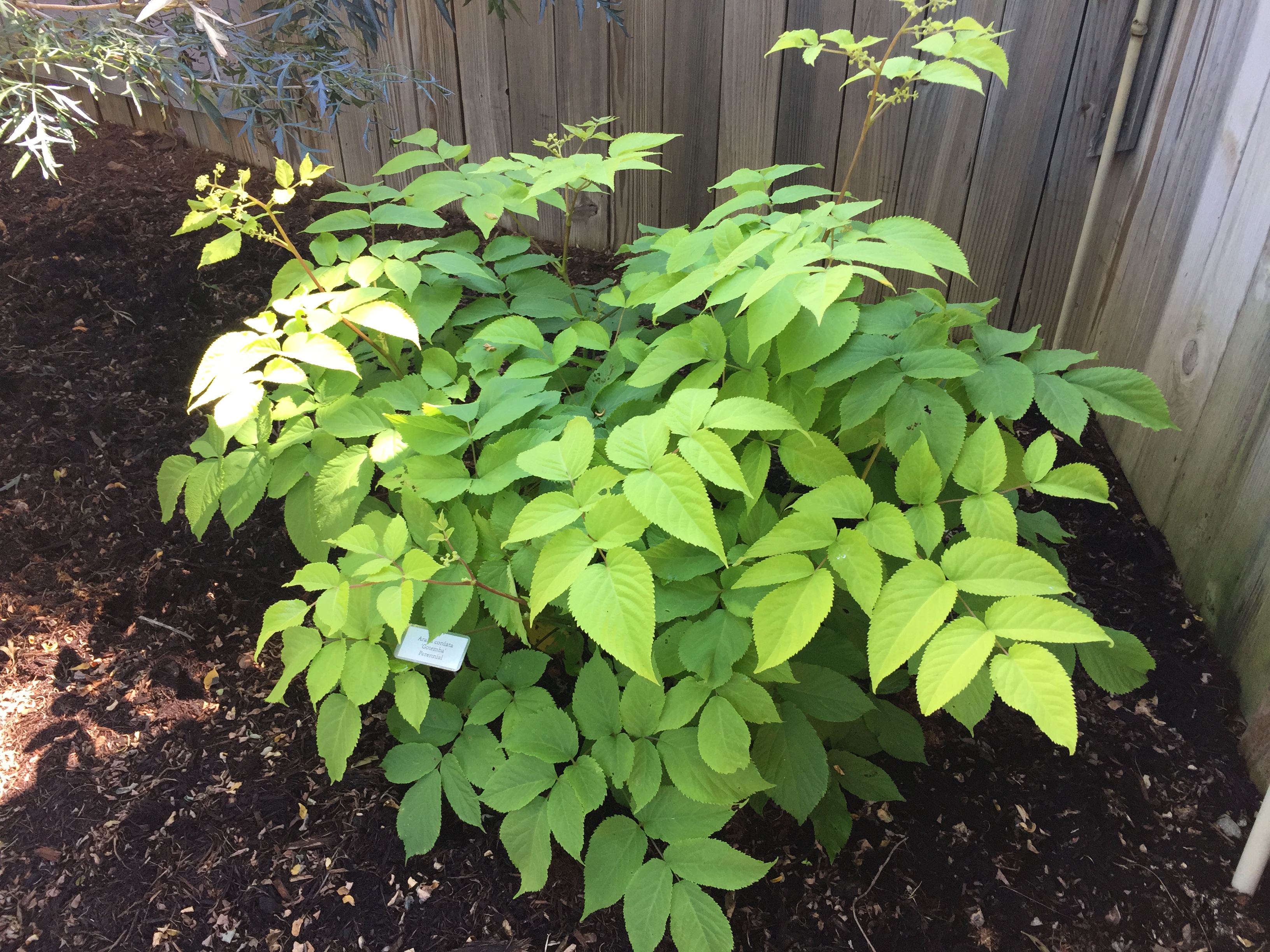Resource Library
Plant of the Week: Aralia cordata Spikenard Golden Spikenard
Aralia cordata Spikenard Golden Spikenard — Golden Spikenard is a bold herbaceous perennial that has real potential in shady places around Arkansas (Image courtesy Gerald Klingaman)
Download High Resolution
I mostly got over “cute and dainty” a long time ago. Give me big, robust plants any day. Should they get too big, I’ll cut them back, move them or take them out. Small and wimpy things get lost in the landscape but big, bold plants such as Golden Spikenard (Aralia cordata ‘Gotemba’ or ‘Sun King’) are hard to ignore.
There are 68 kinds of aralias described in the botanical literature. The majority of these originate in East Asia, although North America has a fair selection of native species. They come in two basic forms: the suckering tree-like woody plants such as devil’s walking stick (A. spinosa), and the herbaceous kinds called spikenards (A. cordata from Japan and the closely related A. racemosa from eastern North America).
The Japanese spikenard can reach over 6 feet tall with a 4 foot spread. In early spring, stout stems arise from a compact crown and produce 2-foot-long, twice-divided compound leaves with leaflets to 5 inches long and half as wide. In the typical form, the leaves are a rich dark green, but in the golden forms leaf color is a chartreuse gold that becomes somewhat greener as the summer progresses. The foliage is said to not be favored by deer.
Japanese spikenard is called udo in its home country, and young shoots are commonly added to soups in the springtime. According to early Japanese plant explorers, it was universally cultivated in fields and gardens. Attempts to introduce it as a vegetable for American gardens failed about a century ago.
In midsummer on well-established plants, golf ball sized clusters of quarter inch white flowers form in semi-open panicles held above the foliage. The flowers are followed by pea-sized purple-black berries in the fall. While interesting, the foliage is the main ornamental feature of the plant.
The golden spikenard appears to have been first introduced into the United States by Barry Yinger, the storied plantsman from Pennsylvania. Yinger made a number of plant collecting trips to Japan during the period from the mid 1970’s until 2002, when his small mail order nursery, Asiatica, was destroyed by fire.
“Sun King,” Yinger’s introduction, was found in a small nursery in Japan sometime in the 1990’s and was mass propagated in tissue culture by about 2000. The similar appearing “Gotemba” was later introduced by Dan Hinkley, the prolific plant explorer based in Washington state who collects for Monrovia Nursery. Hinkley found his golden foliaged spikenard growing in Japan’s Gotemba Nursery.
The green leafed Japanese spikenard has grown beside the American spikenard in a shaded nook on the UofA campus in Fayetteville for about 15 years. Of the two, the Japanese species is the more ornamental plant, with a more overall leafy look, as opposed to the “stemmy” look for the native species. Although I’ve had no long-term experience with the golden leafed forms, I expect they will behave similarly to the species.
Golden spikenard is a nice addition to the shade garden, where its bold form compliments other large shade plants such as hosta. Though said to be capable of growing 6-10 feet tall, the plants I have watched have never exceeded 42 inches in height.
These plants should be planted in well-prepared organic soil that can be watered during the summertime if a prolonged drought develops. In nature, they are found in light shade but will tolerate more sun as long as they are kept watered. If the shade is too heavy little flowering can be expected. Once established they can be expected to be long lived. Hardiness is from zone 4 through 9.
